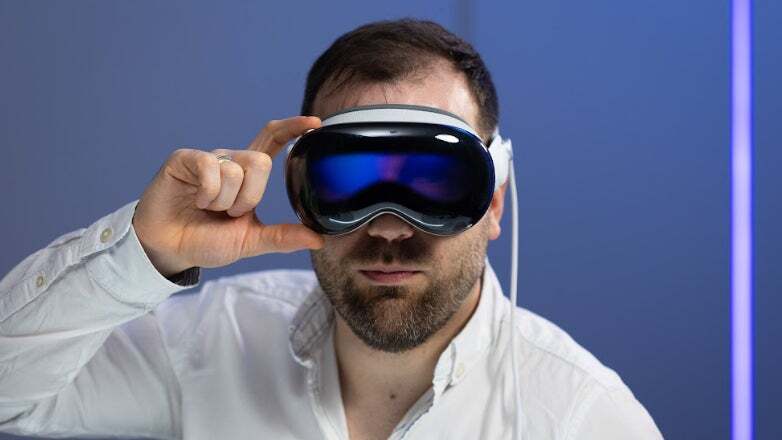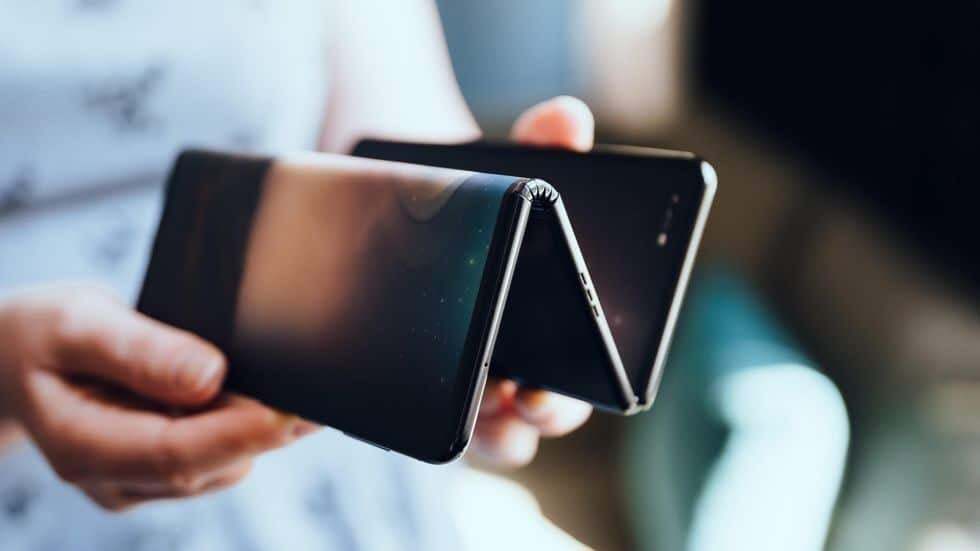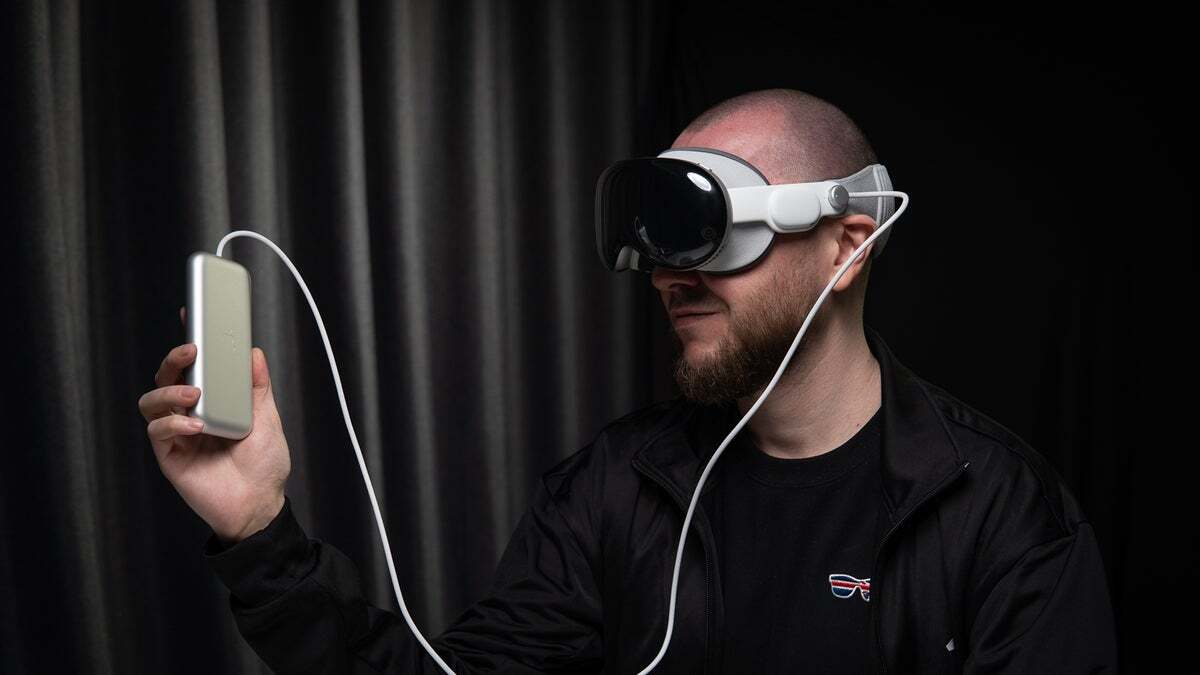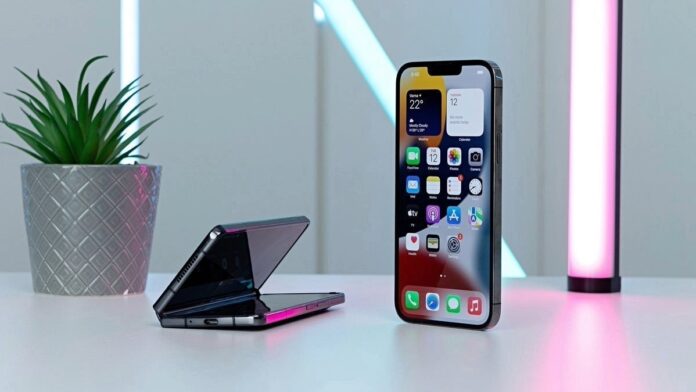Somehow, though, Apple seems reluctant to hop on the foldable train, and for a good reason, if you ask me. Many people think that if someone could get the foldable idea right, it would be Apple, but the same hype surrounded the Apple Vision Pro, and at least to me, it seems clear how that one ended.
There were some conceptual issues with the Vision Pro that prevented it from starting the long-awaited AR/VR revolution. I think the foldable iPhone—let’s call it the iPhone Fold for simplicity—is doomed to follow the same fate. If Apple doesn’t change its approach, that is.
The Apple Vision Pro: When Hype’s Not Enough

Dead and forgotten
The Apple Vision Pro represented a bold step into the AR/VR market, a sector that many believed was poised for explosive growth. The headset boasted some amazing specs: high resolution screens, quality optics, a powerful chipset, a premium design, and the usual integration with Apple’s ecosystem.
Everyone expected the world to change overnight and people to start swapping their Macs for Vision Pros. Well, at the end of the two-week return period, many people started to return their Vision Pros, and sales were reportedly not great in the first place. If we run with that assumption, we have to ask: what was the issue?
First, the Vision Pro‘s price point was significantly higher than competing products, making it inaccessible to many potential users. While Apple products are generally positioned as premium, the Vision Pro‘s cost exceeded the budgets of all but the most dedicated early adopters.
Second, despite its impressive capabilities, the Vision Pro targeted a niche market. AR and VR, while promising, have not yet become integral parts of everyday consumer technology (and if you ask me, they never will). Not without a conceptual change, and the Vision Pro didn’t offer that change.
Add to all that the steep learning curve, the usual discomfort present with all VR headsets, the huge price tag, and the limited applications, and you get the picture.
The iPhone Fold: Revolution vs Practicality?


The iPhone Fold is facing a tough dilemma
The smartphone market today is vastly different from the market Apple entered with the original iPhone in 2007. People are spoiled with choice, there are high-quality gadgets everywhere, and the foldable market in particular is starting to get populated with some impressive models (OnePlus Open, Honor Magic V2, even the Pixel Fold, to mention just a few).
This puts Apple in a very tight spot with the hypothetical iPhone Fold.
On the other hand, going for a fringe device just to wow the audience, with no real practical value to the user, might send the iPhone Fold down the Vision Pro route.
iPhone Fold vs iPhone Flip?


To flip or to fold, that’s the question
The form factor of the future foldable iPhone is still undecided (heck, we don’t even know if Apple is ever really launching one!). There are patents that go both ways, and nobody’s sure what Apple will do next. The most radical scenario would be for Apple to launch two foldable models, emulating what Samsung does.
That’s where the problems begin. On one hand, people don’t seem to care about a compact iPhone! We saw what happened to the iPhone Mini and its quick demise. But on the other hand, the Galaxy Z Flip is one of the best-selling flip phones out there. So the decision is still out there.
Going for a flip form factor will also save Apple the nuisance of redesigning iOS, or, in the worst case scenario, will mean tweaking it for the external cover screen.
A full-fledged foldable iPhone, on the other hand, will give Apple the chance to redeem itself and offer something new and fresh. What’s the answer? There isn’t one.
Learning from the Vision Pro


Where did my money go…
To avoid repeating the fate of the Vision Pro, Apple needs to adopt a more pragmatic approach with the iPhone Fold (or Flip, for that matter).
For the iPhone Fold to succeed, it needs to offer more than just a novel form factor (which, as we all know by now, is not novel anymore). The device’s success hinges on its unique features and user experience, coupled with robust support from the developer community (something that is still lacking with the Vision Pro).
We still haven’t addressed the elephant in the room. The price tag. Price remains one of the most significant barriers to the adoption of new technology. Apple is learning that the hard way with the Vision Pro.
The iPhone Fold kind of has an upper limit on its price, tied with popular foldable models such as the Galaxy Z Fold and Z Flip. Going overboard with the price will potentially turn away buyers and, in the worst case scenario, steer them toward the competition.
Conclusion: A Tough Dish To Cook


Good things take time… but sometimes you need to act fast!
The iPhone Fold has the potential to be a groundbreaking product, but its success is far from guaranteed. For such a device to succeed, several key ingredients should be present in this technological soup, so to speak.
First, the device should provide a unique user experience, different from a regular iPhone, and, most importantly, different from what other foldables have to offer. Second, Apple must ensure a rich and vast software ecosystem in the form of apps, specifically designed to make the most of the foldable form factor.
And third, the price should be competitive. This might be the hardest one to pull off, as Apple wouldn’t want to cannibalize its own non-foldable models. It’s a tough dish to cook, one that’s worthy of Gordon Ramsey’s attention. Only time will tell whether Apple will get it right.
👇Follow more 👇
👉 bdphone.com
👉 ultraactivation.com
👉 trainingreferral.com
👉 shaplafood.com
👉 bangladeshi.help
👉 www.forexdhaka.com
👉 uncommunication.com
👉 ultra-sim.com
👉 forexdhaka.com
👉 ultrafxfund.com
